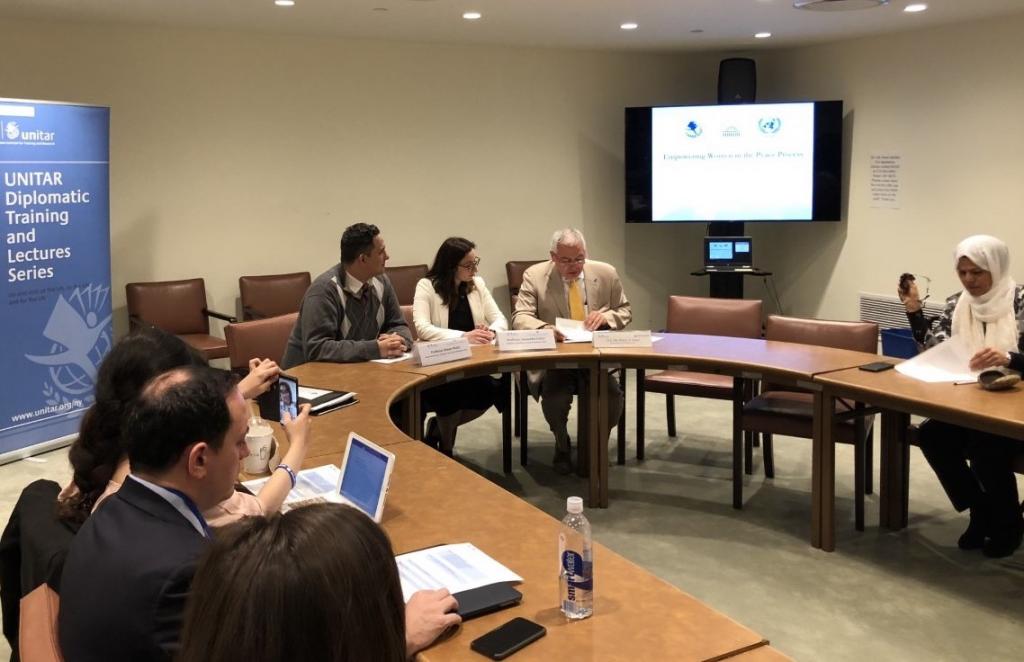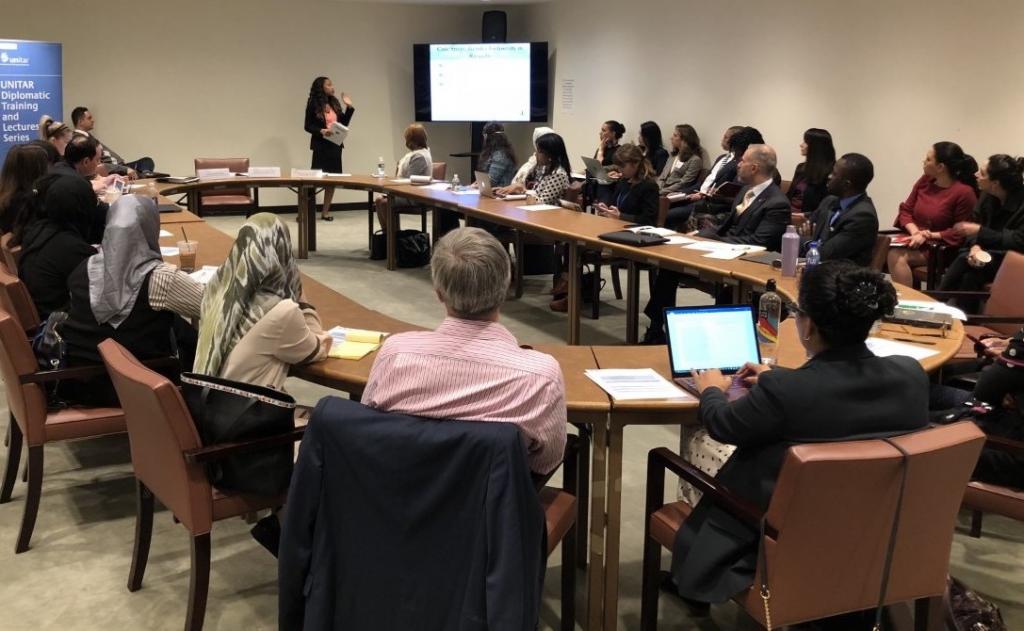Empowering Women in the Peace Process
 3 May 2018, New York, USA - The United Nations Institute for Training and Research (UNITAR) and Columbia Law School co-organized a workshop entitled “Empowering Women in the Peace Process” at the United Nations Headquarters as part of the “Conflict Resolution, Mediation and Negotiation” certificate programme 2017-2018, with the sponsorship of the Permanent Mission of Sweden under the programme “Levelling the Playing Field”.
3 May 2018, New York, USA - The United Nations Institute for Training and Research (UNITAR) and Columbia Law School co-organized a workshop entitled “Empowering Women in the Peace Process” at the United Nations Headquarters as part of the “Conflict Resolution, Mediation and Negotiation” certificate programme 2017-2018, with the sponsorship of the Permanent Mission of Sweden under the programme “Levelling the Playing Field”.
The seminar revolved around two main case studies, each illustrating a certain method of empowering women. Participants were then asked what were the benefits and possible limitations of each strategy, before being presented with the ideal strategy to be followed.
In the first case study, female staffers working in the Obama administration opted for a method they called “amplification” to make their voice heard: when a woman made a key point, other women would repeat it, giving credit to its author, therefore forcing the men in the room to recognize the contribution and denying them the chance to claim the idea as their own. As a result, President Obama noticed this issue, and gender parity was achieved within  his inner circle and among his top aides during his second term - a major improvement, as 2/3 of his senior staffers were men when he first took office.
his inner circle and among his top aides during his second term - a major improvement, as 2/3 of his senior staffers were men when he first took office.
The second case study was that of Rwanda, where 61% of Rwanda’s parliamentary seats are held by women today. These positive results did not, as one might expect, happen overnight, but rather gradually and over a long period of time. After the 1994 Rwandan civil war that left approximately 800,000 people dead, President Paul Kagame recognized the importance of women, who made up 60 to 70% of the remaining population at the time, and decided that Rwanda could not rebuild on men’s labour alone; the Rwandan government pledged that it would encourage girl’s education and appoint women to leadership roles; and Rwanda’s 2003 Constitution consequently decreed that 30% of parliamentary seats would be reserved to women.
The Columbia Law School professors then explained that both approaches to empowering women (the bottom-up approach illustrated in the first case study and the top-down approach illustrated in the second one) are complementary and should form part of a single comprehensive strategy in order to maximize effectiveness and sustainability. An 8-step process for leading change was also shared with the participants.
Apart from the Q&A session, participants were given the time to share their views and put their knowledge into practice through a role play session where they were divided into groups of four to discuss a strategy meeting between two fictional countries: Phoenixia and Fortuland.
Participants left the workshop with a better understanding of the ways in which change can be instigated at the organizational level and spearheaded at the individual level, while also fully recognizing the importance and urgency of increasing women’s meaningful participation in peace processes.
Photos: Participants and lecturers of the workshop

